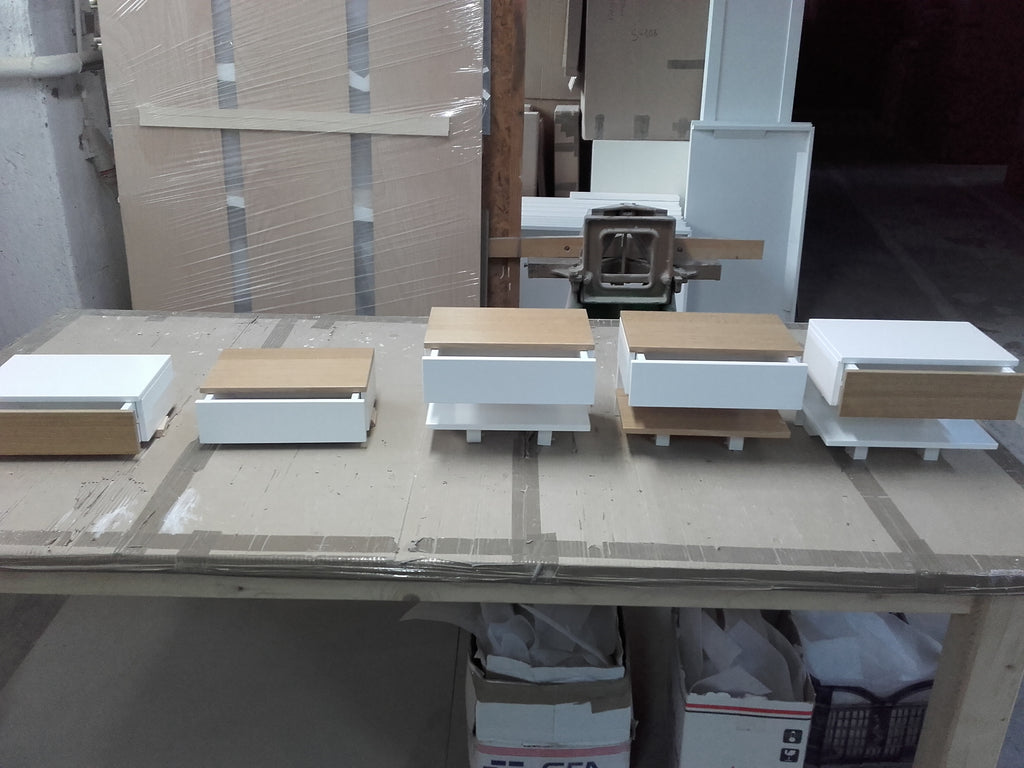Sustainability. We're all more aware of it in 2019 aren't we. It's not like its new, it’s been building for a long time. We've all watched Blue Planet and been horrified by the literal oceans of plastic. We've quickly ditched our plastic straws and we're trying to remember to take our reusable coffee cups everywhere.
That's all great at an individual consumer level but what can and should businesses be doing to make a difference? From the outset, I've been aware of the need to source responsibly and really just know what is going on in the business. The reality is that no production process is 100% impact free but there are lots of ways to try and reduce that impact.
Here are a few ways we try to make sure that Urbansize products are sustainable. Let me preface this by saying that this is a work in progress. I can't claim to have all the answers about sustainable furniture production. What I can say is that I am reading, learning and actively seeking ways to improve how we make our furniture.
Start at the beginning - the raw wood

We only use European beech and oak. Why? Because European wood is regulated and there are re-forestation programs in place for sustainable forest management. By buying local to our workshops means that we are assured of good sustainable wood. It is far more difficult to ensure that wood is from sustainable sources in Asia and even the US because they don’t have protective laws in place for forest management.
The process
The wood working shops we work with are extremely small and family owned. The people working there are craftsmen and passionate about what they do. This not only results in a higher quality product but also ensures that they actually care about where things come from and how they are made. The majority of the wood working is done by hand, which reduces the need for heavy machinery.
 bedsides in progress
bedsides in progress
We avoid any additional processes which add stress to the environment. For example, we don’t use MDF because although the components themselves are relatively environmentally friendly, the process to bind them is highly toxic. The same goes for achieving certain ‘looks’ like the bleached wood look (actual bleach is used for this, creating a dangerous work environment for workers and a toxic waste product which often ends up in rivers). We keep to a natural look.

The finishing

The key to minimising environmental impact here is again to keep things as a natural as possible. All of our natural wood products are finished in an oil which is less toxic than cellulose based lacquers. Our painted finishes are all non toxic and water based. Our workshops also make products for children so they are very familiar with non toxic finishes.
 watching paint dry at the workshop
watching paint dry at the workshop
The marketing
The interiors and home market has definitely been following a fashion type marketing model of ‘seasons’ and ‘new drops’. Whilst this is exciting and causes more of a buzz in a marketing world, it encourages a constant need to buy at every opportunity. We only release new products when we have designed something that we think will be useful and durable for the consumer. Our focus is on providing quality items to last, not quick fix trend based items. Buy less, choose well, make it last.

The consumer
We encourage a ‘buy small’ mentality to our customers. Smaller producers are far more likely to be aware of their supply chains and actually care about this origin of their product. As a business (as well as consumers ourselves!) we buy small and support fellow designers and makers. For our product photoshoots, we will buy ‘props’ like cushions and artwork from small makers such as Tilly & Sage, Frazzle & Florrie and Margo in Margate to name a few.

So these are the steps we’ve taken so far but there’s always more that can be done. I’ve written down a few ways I want to try and improve our green credentials in 2019, it’s a journey and I will be sure to keep you updated on any more improvements we make. Is sustainability important to you? Do you actively seek out companies who are making an effort to improve their sustainability?


 bedsides in progress
bedsides in progress watching paint dry at the workshop
watching paint dry at the workshop
This is cool!
Great to see. This is so important.
Loveeeee this, so here for companies taking sustainability seriously and makes your products even more special ✨🌳❤️
Great tips here and amazing to see a company making such an active effort to be sustainable. The majority of waste comes from companies and it is important that they lead by example.
I am really happy to have come across this post and your company. I’m sick of finding out that I have bought an everyday item that turns out to have hurt people or damage the environment!!! Your products are wonderful and I love the fact that sustainability is clearly something that genuinely means something to you.